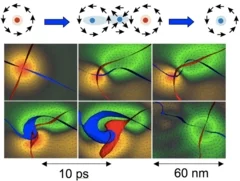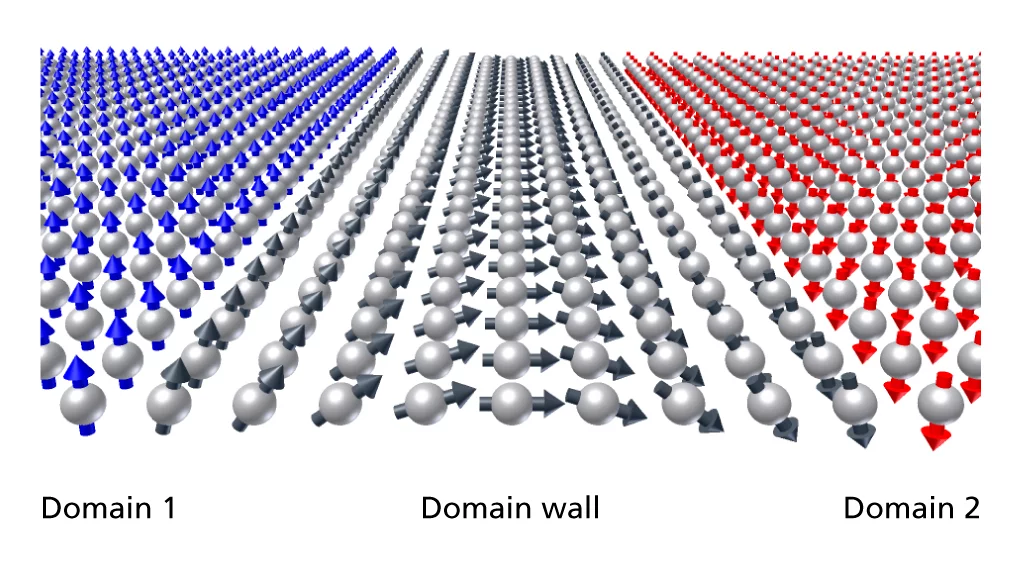Materials with special magnetic properties play an important role in modern technologies – for example, in the hard disc drives used to store data on a computer. Research at SwissFEL will help us to develop new magnetic materials, and to observe the fast processes in these materials as they happen. Thus, we will be able to see exactly what happens inside a hard disc when its data content is modified.
The fact that we can now store a music collection that would have required an entire cabinet a few years ago, on a device smaller than a mobile telephone has to a great extent only been made possible by the development of novel magnetic materials. It is the magnetic properties of a material that allow data to be stored in the device and read out. And in most cases, fundamental research contributed the crucial ideas that facilitated advances in technologies. Despite the levels of miniaturisation achieved to date, the aim of going "smaller and faster" still applies, and the search continues – for new materials and new physical effects that could be used to store data in smaller spaces and process it more rapidly. Here, too, SwissFEL will undoubtedly make significant contributions, because its X-ray pulses will also be able to reveal magnetic processes and structures – even very rapid processes and extremely small structures.
Data storage using tiny magnets
Data storage media such as hard discs are probably the best known form of magnetic materials used in electronic equipment. A hard disc contains countless, small magnetisable regions, with a size in the region of 40 by 40 nanometres. Each of these regions acts like a tiny magnet that can be magnetised in one direction or the other. Information is effectively stored in the directions of magnetisation of many of these tiny magnets. To store new information, the direction of magnetisation of a subset of these tiny magnets has to be reversed – in a process that takes about 100,000 femtoseconds. For the information to be packed as densely as possible, these individual magnetised regions must be as small as possible. If the storage device needs to store data faster, materials in which the direction of magnetisation can be changed more rapidly will have to be developed.
Magnetisation in motion
The individual magnetic regions mentioned above are themselves made up of even smaller magnets – i.e. atomic magnetic moments – the smallest magnetic building blocks. When all of the magnetic moments in one region are pointing in the same direction, this region becomes ‘magnetized’. For applications, it is the collective motions of these magnetic moments, during which many moments change direction, that are particularly relevant. Such motions are important, for example, when the magnetisation of regions of a hard disc is changed, i.e. when the stored data is altered. A good example of this is the displacement of domain walls. These walls separate regions in which the magnetic moments are aligned differently. They are able to move. When they do, the magnetic moments on one side of the wall change direction and align themselves parallel to those on the other side.
SwissFEL will allow us to follow such processes in detail. This is thanks to the fact that the X-ray light pulses it generates will be able to distinguish the different directions of magnetisation in the materials under study.
Data in magnetic vortices – new ways of storing data
SwissFEL scientists will not only be able to observe processes that take place in today’s hard discs, but will also investigate novel processes that could become the basis for future technologies. Here, too, the alignment of magnetic moments – that is, the elementary magnets associated with individual atoms – will be crucial for data storage. The way these moments align, and the way in which their alignment changes when the storage content is altered, may differ greatly from the technologies employed today.
For example, we will not only be able to see how magnetic moments behave when their alignment is reversed using a magnet, but with the aid of a laser pulse too, or with a so-called "spin current". Spin currents are created by electrons whose spins are all aligned in parallel. These form the basis of spintronics, which are expected to contribute to progress in the miniaturisation of electronic devices.
A further approach will be the storage of data in magnetic vortices. In these, the magnetic moments in a plane are aligned in concentric circles. Only the moment right in the middle "is unable to decide" which direction it should be pointing in, and therefore projects out of the plane. As it has two possible directions, information could be stored in either – a vortex can therefore represent the value 0 or 1, i.e. one bit, the smallest unit of information. A vortex would take up significantly less space than the magnetic region on a present-day hard disc, and would be stable against data loss. The aim of initial research at SwissFEL will be to observe exactly how the magnetic moment at the centre of such a vortex changes direction – a crucial event when old data is erased and new data stored.
Paul Piwnicki
Additional Information
- „It works: Ultrafast magnetic processes observed "live" using an X-ray laser“ – Media Release about experiments on magnetic materials performed by PSI researchers at the American X-ray laser LCLS.
- Overview SwissFEL: http://www.psi.ch/media/overview-swissfel



